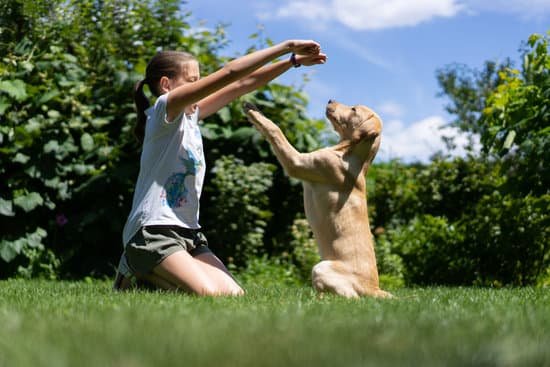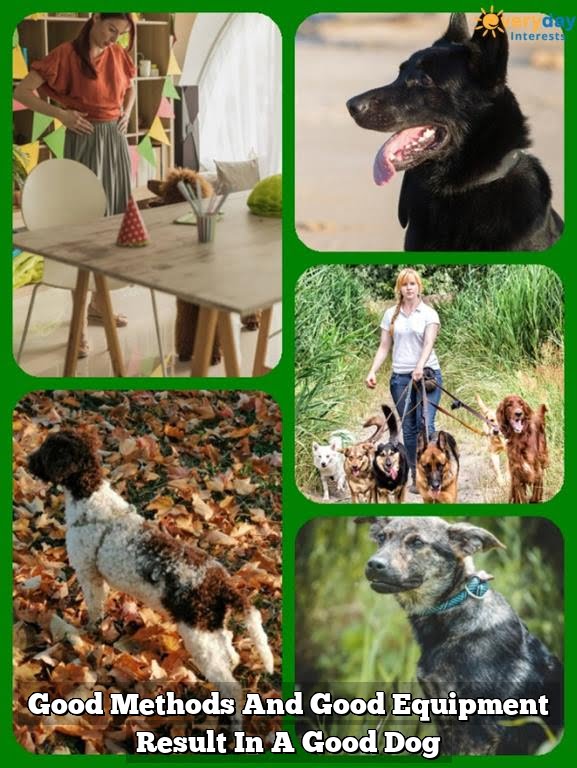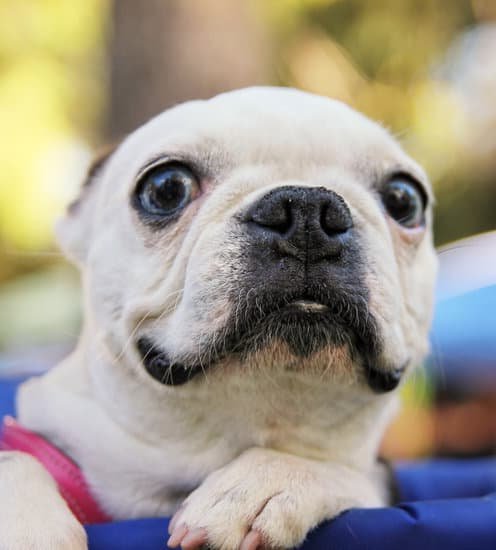Positive reinforcement is a crucial component of effective dog training, focusing on rewarding desired behaviors to encourage their repetition. Using the right reinforcement word can be a powerful tool in shaping your dog’s behavior and strengthening your bond with them. These words serve as immediate feedback for your furry friend, letting them know when they’ve done something right.
When it comes to reinforcement in dog training, it’s important to understand the concept and various types of reinforcement. Whether it’s giving treats, praise, or playtime, reinforcing positive behaviors helps your dog learn what is expected of them. By using the right words paired with rewards, you can communicate clearly with your canine companion and motivate them to continue behaving well.
In this article, we will delve into effective reinforcement words for dog training, providing examples and explanations to help you choose the best ones for your pup. Additionally, we will explore the factors to consider when selecting reinforcement words tailored to your dog’s personality and preferences. By understanding how to use these words effectively, you can create a positive learning environment for your pet and achieve successful results in training sessions.
Understanding the Concept of Reinforcement
Positive reinforcement is a fundamental concept in dog training that involves providing rewards or praise to encourage desired behaviors. This type of training focuses on motivating dogs to repeat behaviors by reinforcing them with something they enjoy, whether it be treats, toys, or verbal praise. Understanding the concept of reinforcement is crucial for effective communication with your furry companion.
Definition of Reinforcement
Reinforcement refers to any stimulus that increases the likelihood of a behavior being repeated in the future. In dog training, it is essential to use positive reinforcement rather than punishment to foster a strong bond with your pet and create a positive learning environment. By rewarding good behavior, you are encouraging your dog to make the right choices and creating a harmonious relationship based on trust and mutual respect.
Types of Reinforcement
There are two main types of reinforcement used in dog training: primary reinforcement and secondary reinforcement. Primary reinforcements are inherently rewarding stimuli like food, water, or playtime. Secondary reinforcements, on the other hand, are learned associations that become reinforcing over time, such as verbal praise or a favorite toy. Understanding these types of reinforcement can help you effectively motivate your dog during training sessions and strengthen the desired behaviors.
Effective Reinforcement Words for Dog Training
Verbal Cues and Commands
When it comes to using effective reinforcement words for dog training, verbal cues and commands play a crucial role. These are the words or phrases that you use consistently to communicate with your dog during training sessions.
For example, commonly used commands like “sit,” “stay,” “come,” and “heel” serve as clear signals for your dog to understand what behavior you expect from them. Using these words consistently and positively reinforces the desired actions, making it easier for your furry friend to learn and follow through.
Positive Affirmations
In addition to basic commands, positive affirmations can be powerful reinforcement words in dog training. Dogs thrive on praise and encouragement, so using words like “good boy/girl,” “well done,” or “great job” can boost their confidence and motivation during training sessions.
Positive affirmations not only reinforce good behavior but also strengthen the bond between you and your pet. Remember to use a cheerful tone of voice when giving these affirmations to make them even more effective in encouraging your dog’s positive behavior.
Treats as Reinforcement
While verbal cues and positive affirmations are important, treats can also be excellent reinforcement tools in dog training. Treats serve as immediate rewards for your dog’s good behavior, making the learning process more enjoyable and satisfying for them.
When using treats as reinforcement, make sure to choose high-quality treats that your dog finds irresistible. It’s essential to strike a balance between using treats as rewards and not relying too heavily on them, as your goal is ultimately for your dog to respond positively to verbal cues alone.
By incorporating these effective reinforcement words into your dog training routine, you can create a positive learning environment that promotes obedience, good behavior, and a strong bond between you and your furry companion. Remember that consistency is key when using reinforcement words, so stay patient, encouraging, and always celebrate small victories along the way.
With the right approach and plenty of positivity, you’ll be amazed at how quickly your dog responds to good reinforcement word for training with enthusiasm and eagerness to please.
Choosing the Right Reinforcement Word for Your Dog
When choosing the right reinforcement word for your dog in training, it is essential to consider several factors to ensure effective communication and positive outcomes. The use of reinforcement words plays a crucial role in shaping your dog’s behavior and strengthening the bond between you and your furry companion. Here are some key factors to consider when selecting the perfect reinforcement word for your dog:
- Personality and Temperament:
- Consistency:
- Motivation:
It is important to take into account your dog’s personality and temperament when deciding on a reinforcement word. Some dogs may respond better to gentle, soothing words like “good boy/girl,” while others may thrive on more enthusiastic phrases like “awesome job.” Tailoring the reinforcement word to match your dog’s individual characteristics can significantly improve their response during training sessions.
Consistency is key when using reinforcement words in dog training. It is essential to choose a word that is easy for you to remember and pronounce consistently. This will help avoid confusion for your dog and reinforce the association between the word and their desired behavior. Whether it’s a simple “yes” or a specific phrase, make sure to stick with one consistent reinforcement word throughout training.
Consider what motivates your dog when selecting a reinforcement word. If your dog is food-driven, using words like “treat” or “snack” can serve as powerful motivators. For dogs who are more toy-oriented, phrases like “fetch” or “playtime” may be more effective. Understanding what drives your dog’s behavior can guide you in choosing an appropriate reinforcement word that keeps them engaged and eager to learn.
By carefully considering these factors – including personality, consistency, and motivation – you can select an effective reinforcement word that enhances the training experience for both you and your beloved pet. Remember that positive reinforcement plays a vital role in encouraging desired behaviors in dogs, making it crucial to choose the right words that resonate with them.
Ultimately, by tailoring your reinforcement word to suit your dog’s unique needs and preferences, you can create a positive learning environment that fosters success in training sessions.
How to Train Your Dog Using Reinforcement Words
When it comes to training your dog, using the right reinforcement words can make a significant difference in their behavior and response to commands. Positive reinforcement is a powerful tool that helps strengthen the bond between you and your furry friend while encouraging desired behaviors. In this step-by-step guide, we will explore how you can effectively train your dog using reinforcement words.
Steps to Train Your Dog Using Reinforcement Words
- Start with basic commands: Begin by teaching simple commands such as sit, stay, or come. Use a consistent reinforcement word each time your dog successfully follows a command.
- Timing is key: Make sure to praise and reward your dog immediately after they exhibit the desired behavior. This helps them understand which action is being reinforced.
- Use high-value rewards: Find out what motivates your dog, whether it’s treats, toys, or verbal praise. Use these rewards along with your reinforcement word for maximum impact.
By following these steps consistently, you can effectively communicate with your dog and reinforce positive behaviors. Remember to be patient and consistent in your training approach. It may take time for your dog to fully grasp the meaning of the reinforcement words, but with dedication and practice, you will see progress.
Using good reinforcement words for dog training not only improves obedience but also strengthens the bond between you and your pet. It creates a positive learning environment where your dog feels encouraged to learn and please you. Keep in mind that every dog is unique, so tailor your approach based on their individual needs and preferences. With patience and persistence, you’ll be on your way to a well-trained and happy pup.
Common Mistakes to Avoid When Using Reinforcement Words in Dog Training
When it comes to using reinforcement words in dog training, there are certain common mistakes that many pet owners make, which can hinder the effectiveness of the training process. One of the most common mistakes is inconsistency in the use of reinforcement words.
It is important to be consistent in using the chosen word or phrase every time your dog exhibits the desired behavior. If you use different words or phrases interchangeably, it can confuse your dog and make it harder for them to understand what you expect from them.
Another mistake to avoid is using negative reinforcement words or phrases. Positive reinforcement is all about rewarding your dog for good behavior, not punishing them for bad behavior. Using negative words or tones when training your dog can create a sense of fear or anxiety, which may lead to behavioral issues down the line. Instead, focus on using positive and encouraging reinforcement words that motivate your dog to repeat the desired behavior.
Additionally, timing plays a crucial role in using reinforcement words effectively during training sessions. Some pet owners make the mistake of delaying the delivery of the reinforcement word after their dog has performed a desired behavior.
To ensure that your dog makes a clear connection between their action and the reward, it is important to praise or reward them immediately after they exhibit the desired behavior. This helps reinforce the positive association between their action and the verbal cue, making it easier for them to understand what they are being rewarded for.
By avoiding these common mistakes and instead focusing on consistency, positivity, and proper timing in using reinforcement words, you can effectively communicate with your dog during training sessions. Remember that positive reinforcement is all about strengthening the bond between you and your furry friend through encouragement and rewards rather than punishment or intimidation. With patience and dedication, you can help your dog learn new behaviors and commands while building a trusting relationship based on mutual respect and understanding.
The Benefits of Using Positive Reinforcement in Dog Training
Positive reinforcement is a key component in successful dog training. It involves rewarding your dog for exhibiting desirable behaviors, which increases the likelihood of those behaviors being repeated in the future. By using positive reinforcement, you can strengthen the bond with your furry companion and create a positive learning environment.
One of the most effective ways to reinforce good behavior in dogs is through verbal cues or commands. Choosing the right reinforcement word is crucial to ensure that your dog understands what they are being rewarded for. Words like “good,” “yes,” or “well done” are commonly used as positive reinforcement words in dog training. These words convey approval and encouragement to your dog, making them more likely to engage in the desired behavior.
In addition to verbal reinforcement, treats, toys, or affection can also be used as rewards in dog training. However, verbal cues are particularly useful as they can be delivered quickly and precisely during training sessions. Consistency is key when using reinforcement words – make sure to use the same word each time your dog exhibits the desired behavior so they can easily associate it with a positive outcome.
| Reinforcement Word | Explanation |
|---|---|
| Good | This word communicates approval and encourages your dog’s behavior. |
| Yes | Using “yes” as a reinforcement word signals to your dog that they have done well. |
| Well done | “Well done” serves as a positive affirmation for your dog’s actions, reinforcing good behavior. |
Success Stories
Positive reinforcement is a powerful tool in dog training, and choosing the right reinforcement word can make a significant impact on your furry friend’s behavior. Incorporating consistent and effective words to encourage good behavior in dogs can lead to successful training outcomes. Many dog owners have witnessed remarkable improvements in their pets’ behavior by using the right reinforcement words.
One example of an effective reinforcement word for dog training is “good boy” or “good girl.” These simple yet powerful words communicate to your dog that they have done something right and that they will be rewarded for their behavior. Dogs respond well to positive affirmations, and using phrases like “good job” or “well done” can reinforce desired behaviors such as sitting, staying, or coming when called.
Another effective reinforcement word that is commonly used in dog training is “yes.” This word can signal to your dog that they have successfully completed a task and will receive a reward. By pairing the word “yes” with a treat or a favorite toy, you can create a strong association between the verbal cue and positive outcomes. Consistency and timing are key when using reinforcement words, as dogs learn through repetition and rewards.
| Reinforcement Word | Effectiveness |
|---|---|
| Good boy/girl | Communicates reward |
| Yes. | Signals completion of task |
Conclusion
In conclusion, the use of good reinforcement words in dog training is essential for building a positive and effective relationship with your furry friend. Positive reinforcement is a powerful tool that can significantly impact the behavior and development of your dog. By utilizing appropriate reinforcement words, you can effectively communicate with your pet and reinforce desired behaviors.
When choosing the right reinforcement word for your dog, it is important to consider factors such as the individual preferences of your pet, their personality, and the specific behavior you are trying to reinforce. Whether it’s a simple “good boy,” a happy “yes,” or a cheerful “well done,” finding the perfect reinforcement word can make all the difference in your training sessions.
Overall, incorporating positive reinforcement techniques into your dog training routine can lead to numerous benefits, including improved obedience, stronger bond between you and your pet, and a more enjoyable training experience for both parties involved. Remember, using good reinforcement words not only helps shape your dog’s behavior but also creates a trusting and loving relationship based on mutual respect and understanding.
Frequently Asked Questions
What Are Marker Words for Dog Training?
Marker words for dog training are specific words or sounds used to communicate to the dog that they have performed the desired behavior correctly. Examples of common marker words include “yes,” “good,” or a clicker sound in clicker training.
What Is the Name of Positive Reinforcement Training?
The name of positive reinforcement training is simply positive reinforcement training. This method focuses on rewarding the dog for displaying desirable behaviors, such as sitting when asked. Treats, praise, toys, or other rewards are often used to reinforce good behavior.
What Is a Release Word for Dog Training?
A release word for dog training is a cue given to let the dog know they are no longer expected to perform a certain behavior. Common release words include “release,” “free,” or “okay.” Using a release word helps clarify when the dog should stop performing a command.

Welcome to the blog! I am a professional dog trainer and have been working with dogs for many years. In this blog, I will be discussing various topics related to dog training, including tips, tricks, and advice. I hope you find this information helpful and informative. Thanks for reading!





